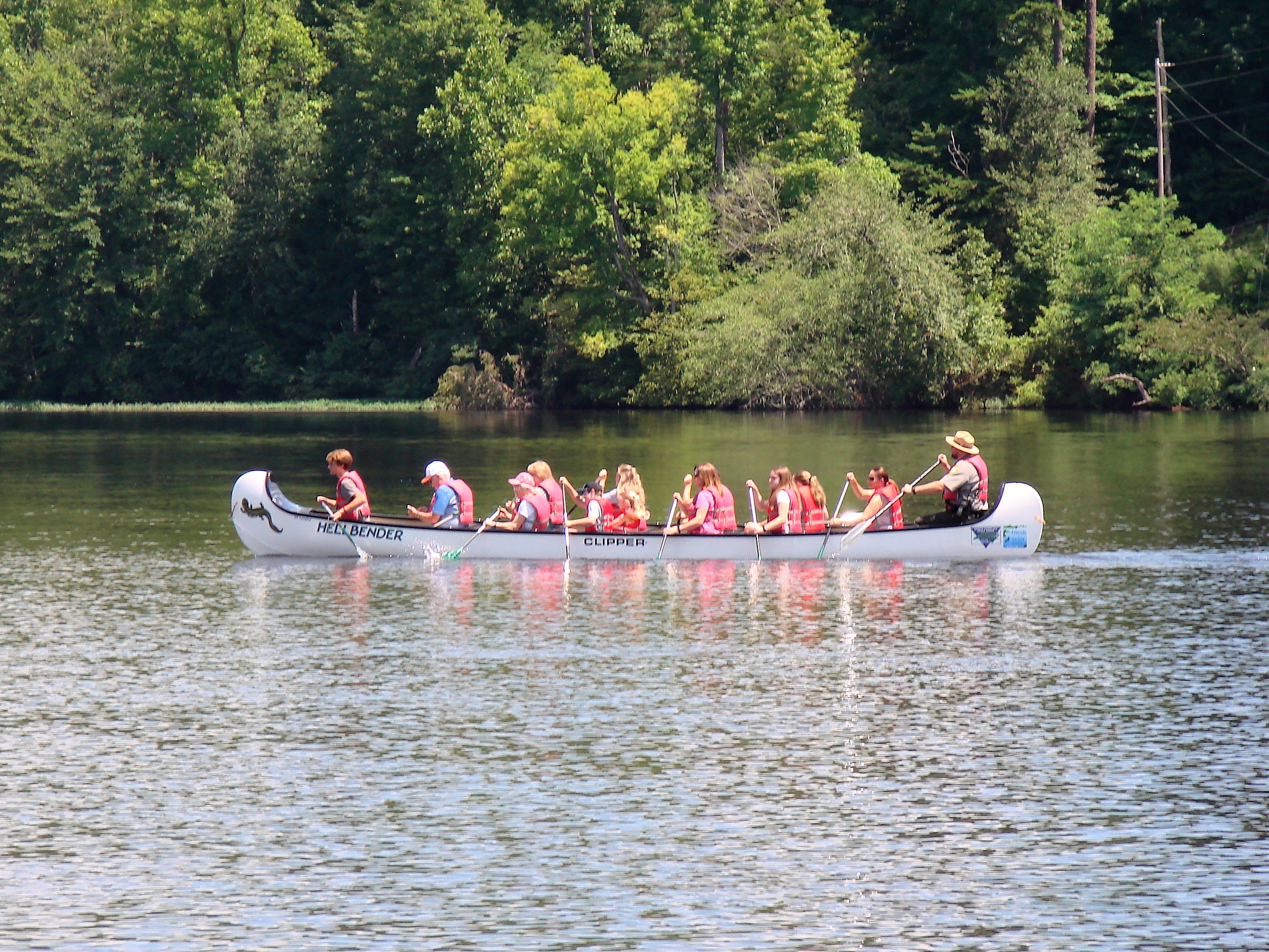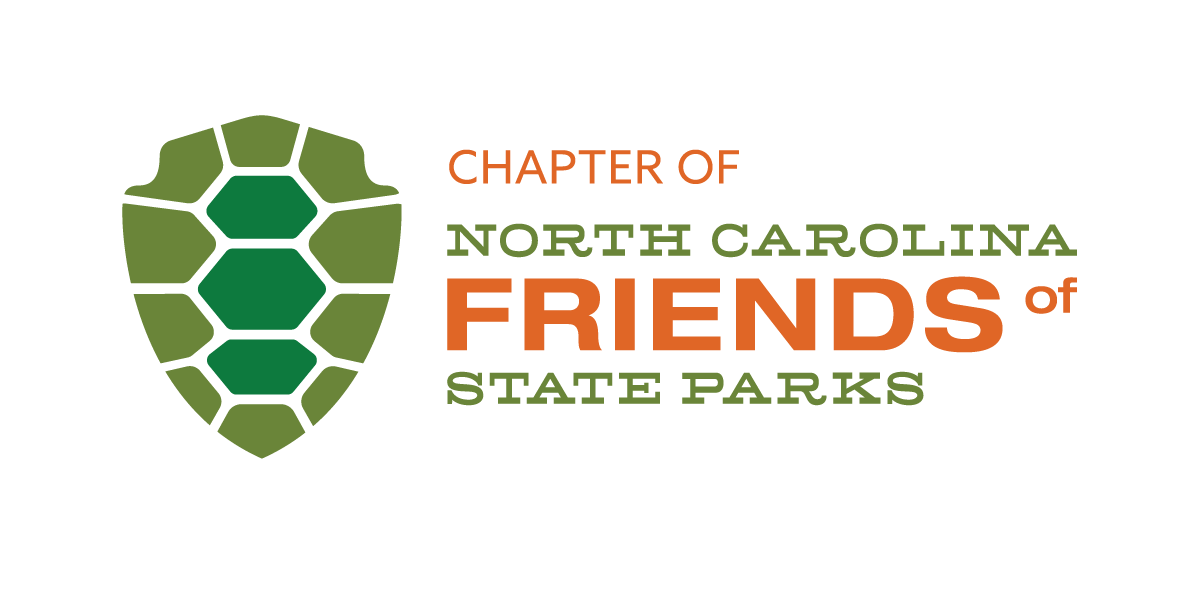| FRIENDS OF MORROW MOUNTAIN STATE PARK |
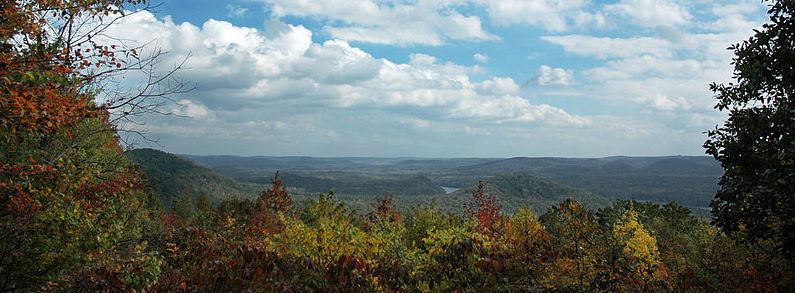
History of Morrow Mountain State Park
Stanly County’s Major Tourist Destination
Over a half-million people visited Morrow Mountain State Park in 2017. They drove up to its famous overlook, hiked its scenic trails, enjoyed a cookout at a picnic shelter, or a swim in its pool. Many encompassed its boundaries on horseback, kayaked or canoed or fished where the Uwharrie flows into the Yadkin. Others relaxed in one of its cabins, or camp sites, or visited the Lodge for a community event, or ambled through its museum, or sat on a fallen tree in the forest to view some deer or enjoy the birdsongs. 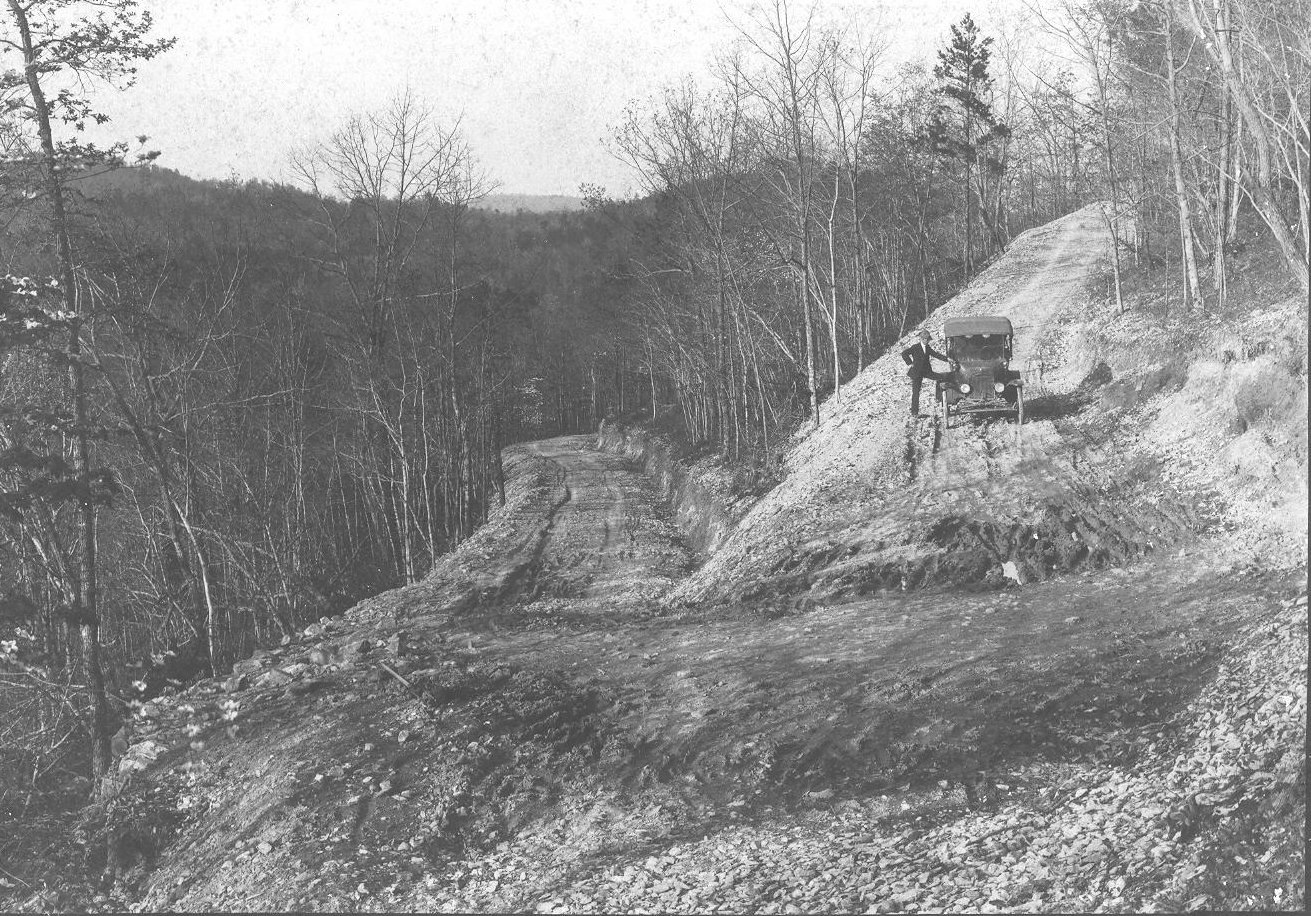
Many of those who visit the park come from different counties, different parts of North Carolina and from out of state. After their visit many go to a local restaurant or retail store or motel. Morrow Mountain is not only “the most fetching gem among destinations for tourists” in Stanly County it also greatly benefits the economy of Stanly County.
The First Visitors
Exploring the Geology of the Carolinas chapter on Morrow Mountain begins “Morrow Mountain is covered with millions of tons of quarrying debris… Human hands quarried the stone long before Europeans arrived in the New World. In fact, humans began using the rock at Morrow Mountain about 11,000 years ago, for making arrowheads, spear points and stone tools. As late as AD 1200 to 1500, people of the Pee Dee culture were still using it. Morrow Mountain is one of the most extensive prehistoric 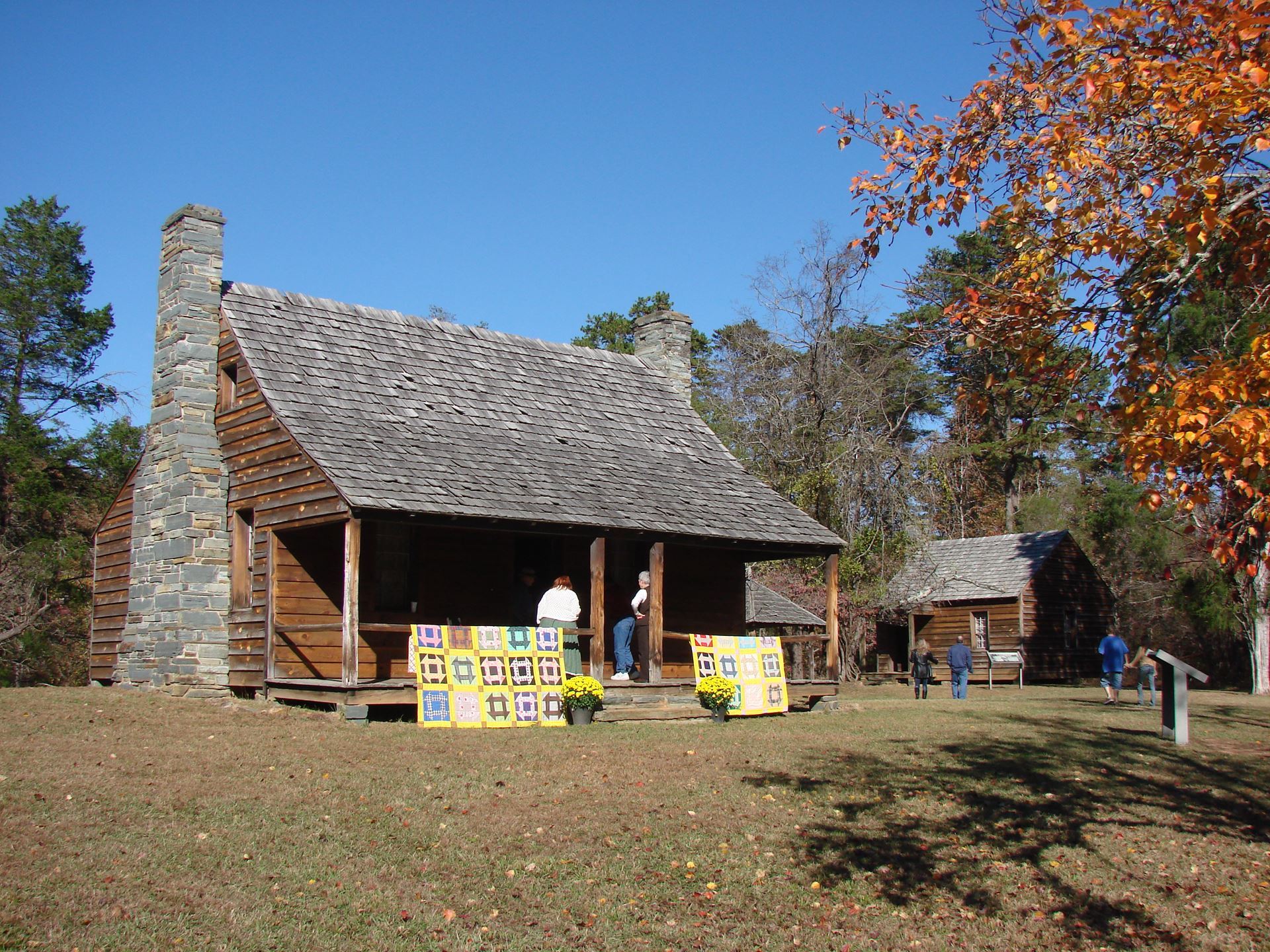
The Early Settlers
A 1733 map that included the area that became Stanly County showed no European settlements but by May of 1773 Henry Munger settled along the Yadkin at a place opposite the mouth of the Uwharrie River and a little down from the turbulent Narrows, where he established a ferry to cross the Yadkin/Pee Dee. When Montgomery County was formed in 1779 the NC General Assembly specified that the first court should be held in the home of Henry Munger and a year later the first Montgomery County Court House was completed. From 1788 to 1794 many of Munger’s holdings, including his early ferry, were purchased by James Tindal. (There were several ferries in the area.) The Montgomery County Court House was moved across the river to the new community of Henderson in 1796 and to several other locations near the Pee Dee River. In 1816 the court house was moved to Lawrenceville and eventually to Troy.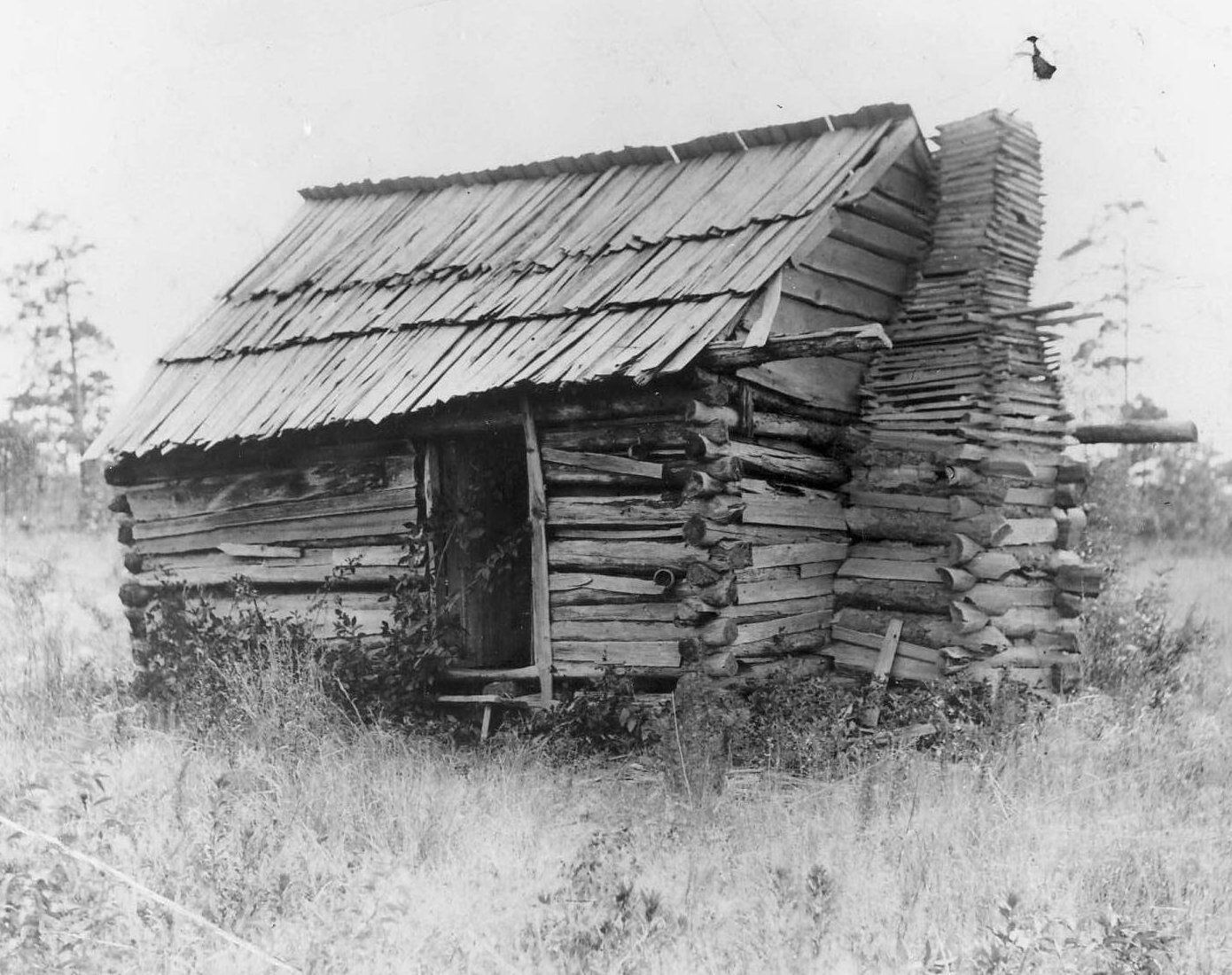
Others settled nearby and this growing community, that became known as Tindalsville, attracted other adventurers like Munger and Tindal who thought that significant money could be made by transporting goods by commercial barges down the Yadkin/Pee Dee to Cheraw S.C. and onto Georgetown at the coast. They thought Tindalsville would become an important riverway transit hub. These early efforts to move goods downriver did not prove successful nor did later far more ambitious plans to build canals, discussed at length in the NC General Assembly, prove successful. The failure of the commercial transport of goods down the Yadkin/Pee Dee River was perhaps the major reason that Tindalsville gradually lost its drive and energy as a community. Tindalsville was granted a US Post Office on July 1, 1799 and it was permanently closed in 1824.
The Salisbury/Fayetteville Market Road and the ferry crossing at Tindalsville proved to be the primary way of transporting the growing number of goods. John Kirk purchased and operated the now vital ferry and the Kirk Inn was built for ferry travelers. Kirk’s Ferry later became Lowder’s Ferry. Several well-established homesteads were spread around what is now park land. Dr. Francis Kron (1798-1883) and his daughters Adalaide (1828-1910) and Elizabeth (1831-1896) were the most famous of the homesteaders. Kron was the key physician for the area and was very involved with the establishment of Stanly County in 1841. The Kron homestead has been re-created at the park. Kron purchased his 234-acre homesite in 1834 from the Rev. McGregor, “a Scotsman, who preached for the Baptists.” Other noted sites include: Dicksville School, Stony Hill Methodist Church, and homesites of Rush, Lilly, Fesperman, Lowder, Russell, Kirk, Blaylock and Stoker.
The Generous Gifts and Broad Community Support
Early efforts to create a Uwharrie Park in Stanly County began in the 1920’s with a small group of citizens including James McKnight Morrow and A.C. Honeycutt, publisher of the Stanly News and Press but the Great Depression slowed the process.
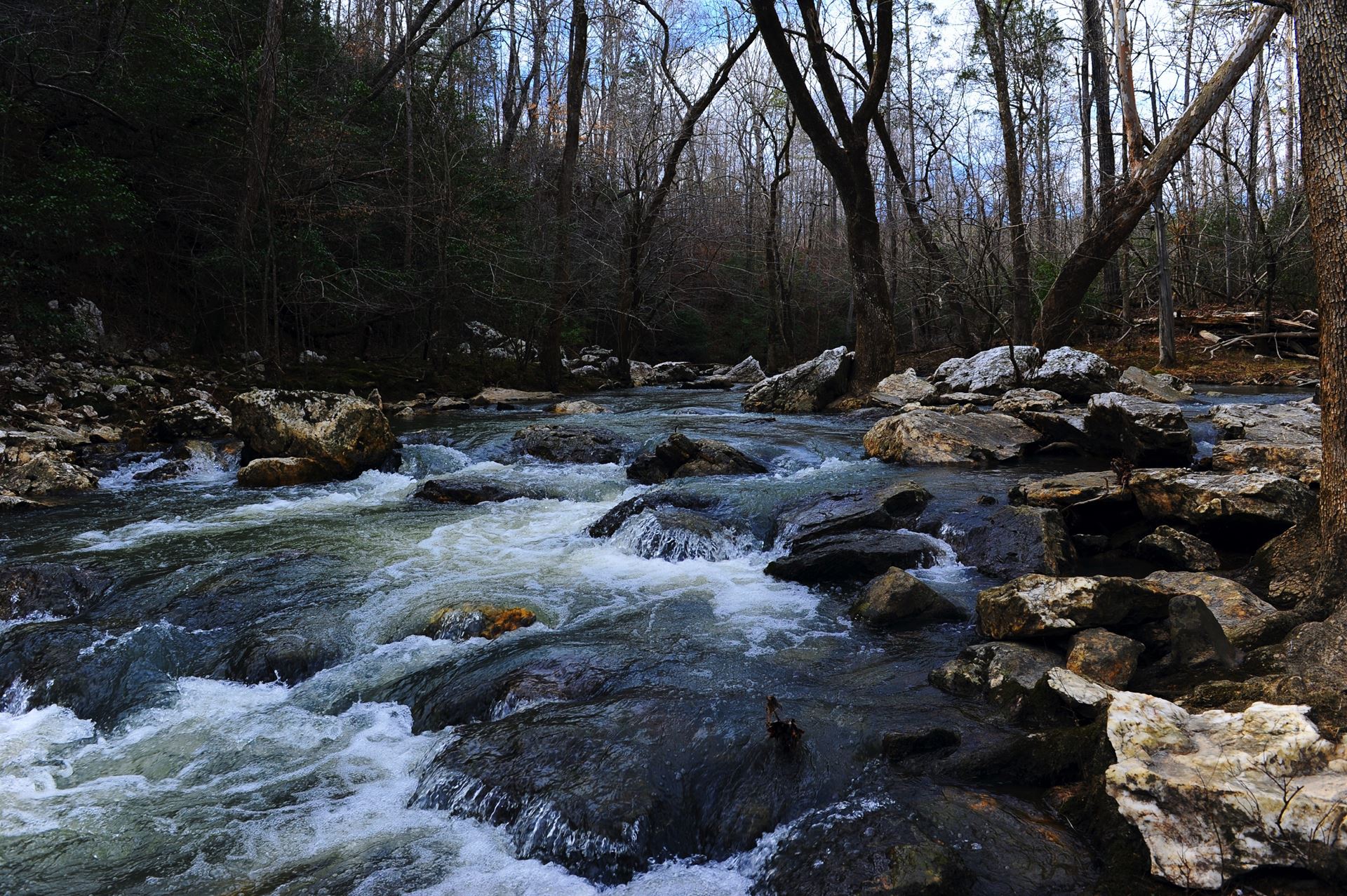 In October of 1933 the Stanly News & Press reported on re-energized and strong community support to create a Uwharrie National Park in Stanly County with a keen eye on the keystone tracts owned by Mr. J.M. Morrow. An editorial in the Charlotte Observer supported the idea and raved about the “impressive scenic assets” of the Uwharries. Several days later the Albemarle Rotary Club went on record to use its influence to gain support in Washington DC for a Uwharrie Park. The Lexington Dispatch also endorses the park in an editorial. Others around Stanly County created or supported petitions to gain the attention of Congressman R.L. Doughton and others in Washington. Meanwhile, Civilian Conservation Corps activity started to Stanly County.
In October of 1933 the Stanly News & Press reported on re-energized and strong community support to create a Uwharrie National Park in Stanly County with a keen eye on the keystone tracts owned by Mr. J.M. Morrow. An editorial in the Charlotte Observer supported the idea and raved about the “impressive scenic assets” of the Uwharries. Several days later the Albemarle Rotary Club went on record to use its influence to gain support in Washington DC for a Uwharrie Park. The Lexington Dispatch also endorses the park in an editorial. Others around Stanly County created or supported petitions to gain the attention of Congressman R.L. Doughton and others in Washington. Meanwhile, Civilian Conservation Corps activity started to Stanly County.
In February of 1935 L.A. Sharpe, Inspector of the State Park Division of the National Park Service, traveled to Stanly County to inspect several thousands of acres in the Uwharries and he made the trip to the top of Morrow Mountain and came away impressed and in support of a new state park. At the time of Sharpe’s trip some in Stanly County were again showing their exceptional generosity. Initially “J.M. Morrow, prominent Albemarle citizen, and owner of 2,000 acres of land, which includes Morrow’s mountain, has offered to donate 700 acres of land…for a state park in this county…” Eventually Morrow donated over 1,100 acres to the park and sold Morrow’s mountain to ensure the park at the bargain basement price of $5,000. (SNAP 3/19/1935)
It is difficult to pin down the exact date of the initial creation of Morrow Mountain State Park but during February of 1935 article after article reads: “State Park in Uwharries Practically Assured As Owner Gives Property” (2/12/1935), “Land in Park Area Secured by Committee” (2/19/1935) followed by “CCC Camp Is Asked For Stanly County” (3/5/1935) and “Bill to Issue Bonds to Buy Certain Tracts In Park Area Passes the House” (3/19/1935) all created the necessary foundation for the park. It was announced on 6/18/1935 that deeds for the park were recorded and much of the land had been donated. The initial deeds totaling around 2,500 acres were transferred to the state and among those who transferred land were J.M. and Addie Morrow, E.E. Snuggs, J.A. Groves, Mrs. G.R. McCain, A.F. and E.C. Biles, E.P. and Pantha Clodfelter, Will and Paul Kirk and Stanly Lumber Company. L.A. Sharpe, released a statement on Monday 6/24/1935 (SNAP 6/28/1935) that the “Morrow mountain state park project has been given final approval by the National Park Service” and that an initial detachment of CCC workers will enter the park this week.
The New Deal Builders – CCC and WPA
L.A. Sharpe, Inspector of the State Park Division of the National Park Service along with help from Congressman R.L. Doughton and then with final approval by President Franklin Roosevelt were able to bring to Stanly County a Civilian Conservation Corps Camp to build much of Morrow Mountain State Park. The tentative site for the CCC Camp was to be “The open space to the left of the toll gate at the entrance of Morrow Mountain” but on 6/21/1935 land for the new CCC Camp, Camp Doughton, was leased by the government near the fork of Main St. and Pee Dee Ave. in Albemarle. By August, Camp Doughton #NC SP-3, had over 200 men at work. The massive undertaking of building the park’s roads, trails, stone walls, picnic shelters, bathrooms, water storage systems and parking areas, etc., was underway. Their quarrying of the parks argillite stone used throughout the park for construction was an impressive project.
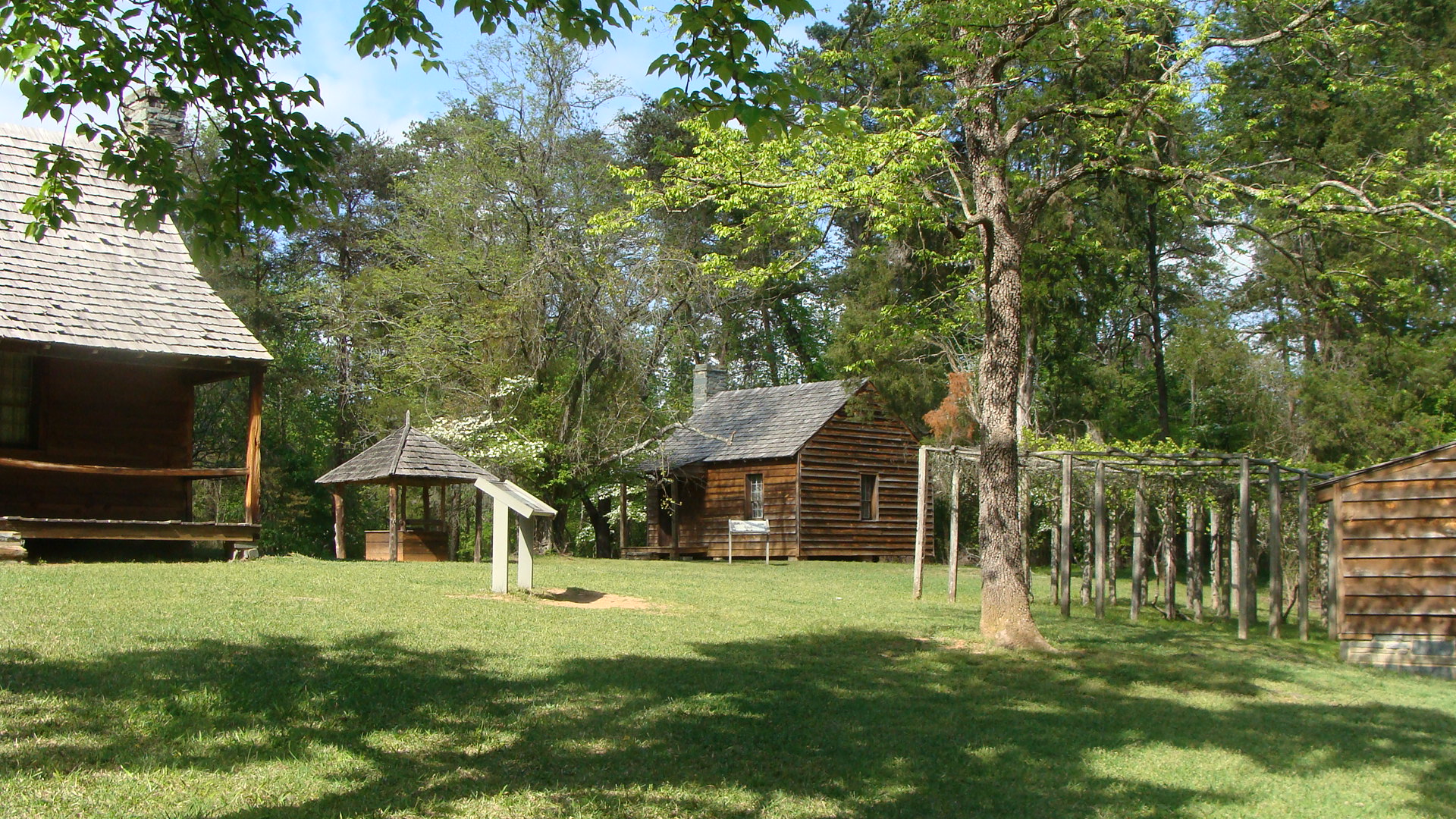
But the CCC were not alone. In September of 1937 Albemarle became the area headquarters for another New Deal program called the Works Progress Administration. This program in Stanly County paid workers who lived at home to do some similar jobs as the CCC. There is little doubt that some projects in the park utilized workers from both groups. But many of the later key projects like the swimming pool, the lower area picnic shelters and large parking lot, the park’s office and the Uwharrie Lodge appear to have been primarily constructed and funded as WPA work projects. On 11/30/1937 the SNAP reported that the $80,000 swimming pool project and bath house will be built by the WPA. Mr. A. H. Kennedy, WPA area supervisor, said that the pool and lower parking area would provide employment for 150 WPA workers. By June 1938 the park has expanded to include 4,000 acres.
The Local, State and National Celebrations Begin
One needs to go back and read the almost daily articles about Morrow Mountain in the Stanly News and Press in 1939 and 1940 to understand the local, state and even national excitement around the new park.
Starting in the spring of 1939 until early July of 1940 Stanly County is abuzz with conversations about the magnificent new park. When will it open and when will the dedication occur? Congressman Doughton is urged by many citizens involved with the creation of the park to invite President Roosevelt to dedicate Morrow Mountain State Park when he makes his trip to the Great Smokey Mountains in June. WPA officials said that the park will be close to completion in June and the Department of Conservation and Development had tentatively set a formal opening for July 1939. A few park projects took longer than expected and the dedication and official opening ceremonies are postponed until the summer of 1940. However, the park’s staff starts to allow regular visitors and thousands begin to flood into the new park. In August 1939 the swimming pool is opened at an admission charge of 10 cents and over 10,000 swimmers enjoy perhaps the best pool in NC before it closes just weeks later in September. On 3/29/1940 the SNAP reports that in an enthusiastic meeting at the courthouse approximately fifty citizens of Stanly County elect R.R. Ingram to chair the official opening of Morrow Mountain with help from W.T. Huckabee, George Laycock and W.H. Morrow. The headline quotes Ingram, “Biggest Day the County Ever Saw.” Paul V. McNutt, head of the Federal Security Agency that operates many New Deal programs including the CCC and Social Security, is invited from Washington to dedicate the park.
On Saturday 6/29/1940 around 8,000 people lined the mile-long parade route to view the eighteen floats, marching bands, scout groups, and National Guard Units. Followed by a barbeque luncheon for distinguished guest and the featured dedication from a special platform on the stone terrace behind the Uwharrie Lodge by Congressman Doughton, Governor Clyde R. Hoey and the keynote speaker Paul V. McNutt. Then followed a water carnival, an archery exhibition, the bathing beauty contest and an evening of dancing with the Jimmie Gunn Orchestra at the Armory since the recently finished floors at the Uwharrie Lodge were not yet fully cured and dry for dancing. Estimates of the total attendance for the day long official opening of Morrow Mountain State Park were 20,000. Many considered the day of celebration for the park to be the finest community event in Stanly County’s history.
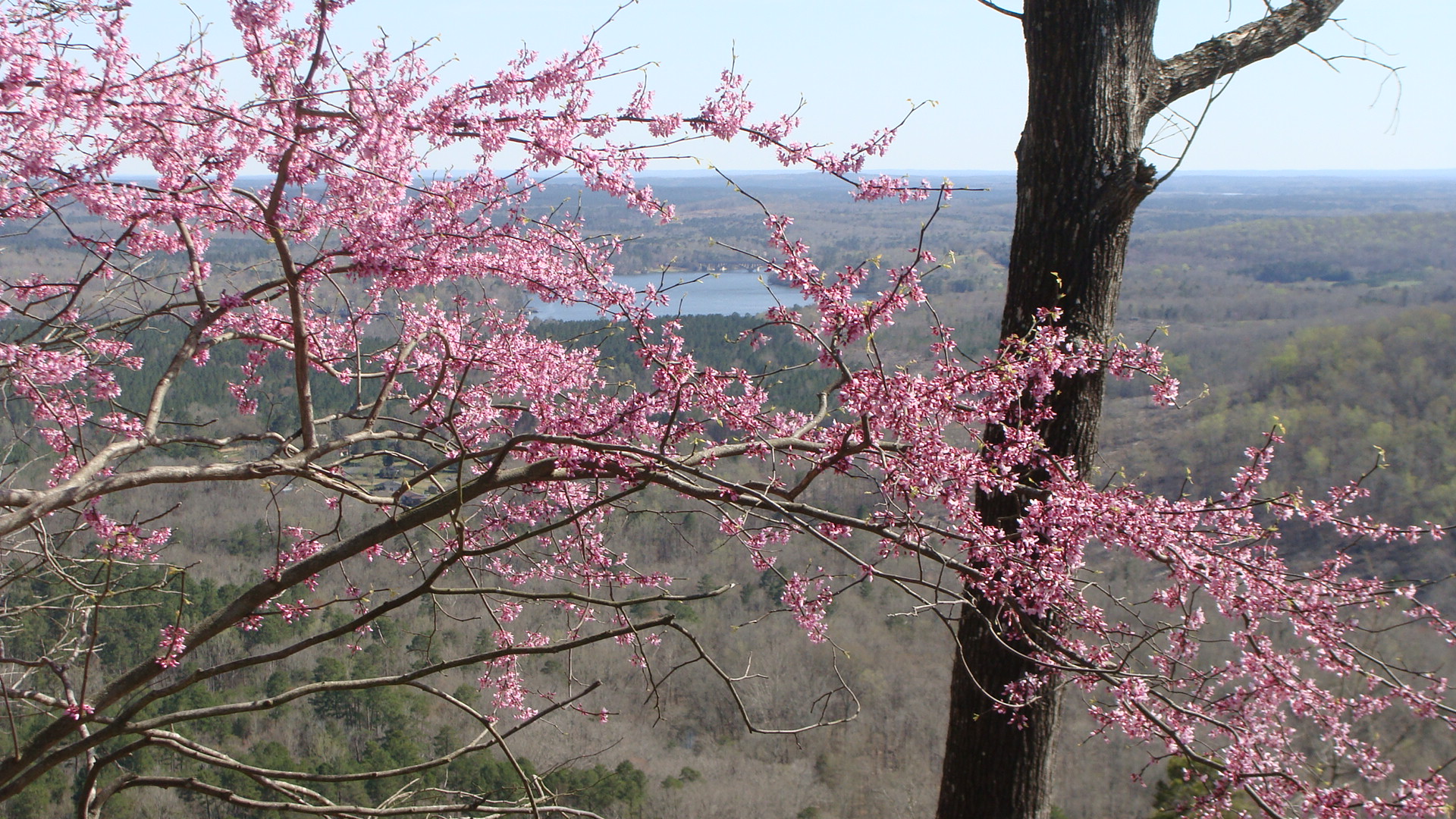
Today
Morrow Mountain now has over 4700 acres. The Land Trust for Central NC, the Stanly County Convention and Visitors Bureau, Friends of Morrow Mt. and adjoining landowners have recently helped expand the park. Other adjoining landowners have been good friends to the park. Alcoa, as part of its Relicensing Settlement Agreement, is scheduled to donate around 1,200 acres to the park that includes the Hardaway Site and land along the Falls Reservoir. The Connect NC Bond Project, approved by voters in 2016, will provide funds for new cabins. Some special funds from the N.C. General Assembly, should help rebuild a new and improved fishing pier/walkway along the Yadkin as well as several other major projects. Park Superintendent, Jeff Davidson, is providing exceptional leadership for the park. The almost new bathrooms, buried powerlines and waterlines to the top of Morrow Mountain are being fully utilized. The relatively new restoration of the park’s stone entrance walls was an important community project sponsored and funded by Friends of Morrow Mountain. (Thanks to several local businesses and Friends of State Parks.) Old Fashion Day at the park now attracts well over 7,000 visitors. A new MicroEye Microscope is being installed to provide a highly magnified view of items found by youth in the park after their hikes. Broad community support and generosity remains as strong as ever for Stanly County’s “most fetching gem.”
John D. Young, Albemarle, NC
Friends of Morrow Mountain, Board member and Secretary of the statewide – Friends of State Parks

